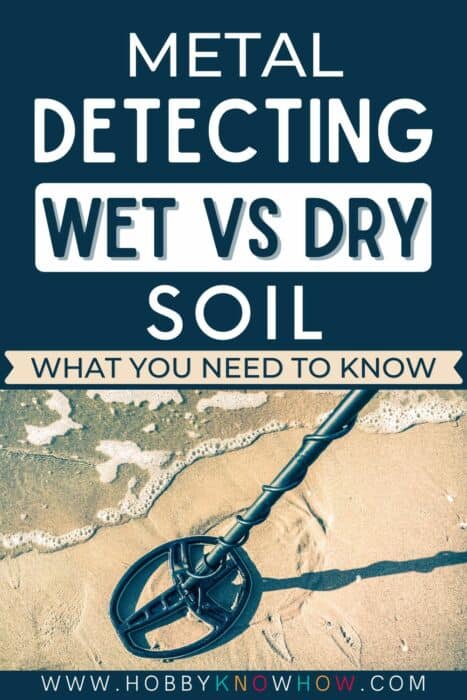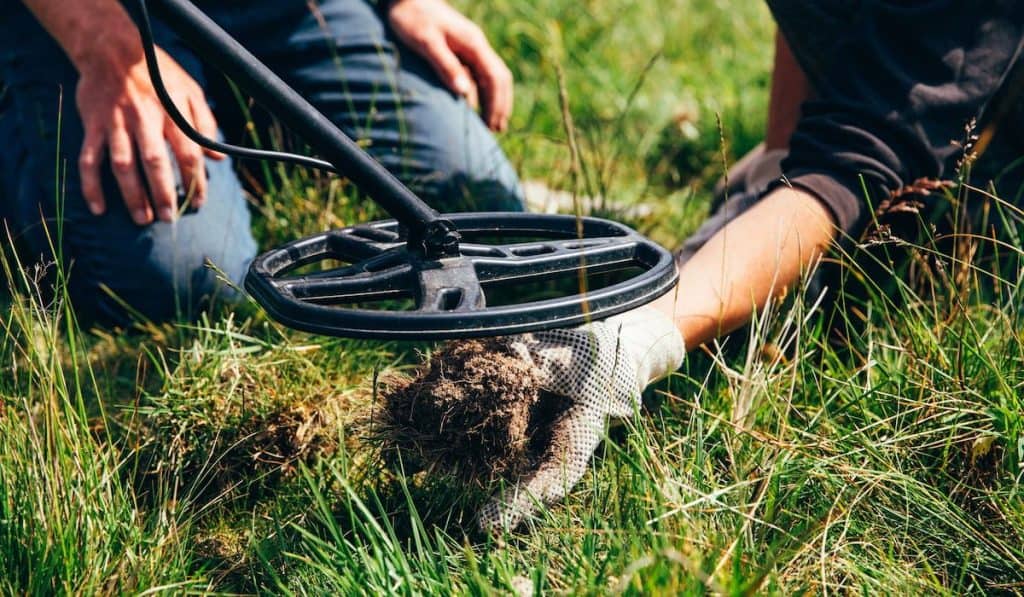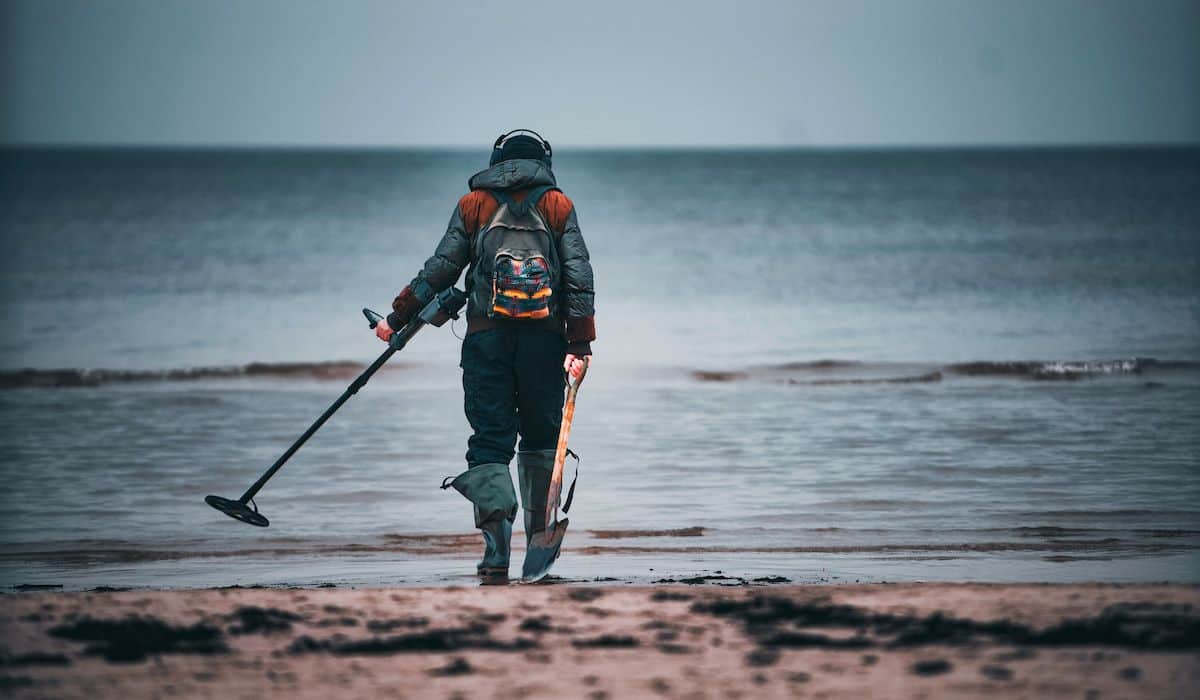What could be more exciting than finding ‘treasure’? Metal detecting is one of the most popular hobbies, mainly because it’s easy to start without special skills.
Any age group can take it up as a pastime, and the exciting thing about it is the element of surprise – you never know what you’ll find.
Sometimes it will be antique coins and buckles, while other times, you may find gold jewelry and family heirlooms.
One factor that will determine your success at finding these items is whether the soil is wet or dry.
Let’s take a deeper look at wet and dry soil and what role they play in your ‘treasure hunting.’
Conductivity
Pure water does not conduct electricity because it doesn’t contain metallic elements.
However, rainwater, seawater, and tap water contain impurities and charged ions like magnesium (Mg2+), calcium (Ca2+), and sodium (Na+).
These elements make it easy to detect metals that are deep in wet soil. Dry soil is not a good conductor as it lacks these ions.
You’ll still get alarms on your metal detector with dry soil, but not as much as with wet soil.
So, most detectorists would say that the best time to go metal detecting is after a downpour when the soil is damp and not soaked.
The only challenge to this, though, is that if the metal detector can target great finds, it will just as easily target junk too.

The ‘Halo Effect’
You will also most likely see a false signal on your detector because of the halo effect caused by iron objects in soil with moisture.
Iron buried for a long time rusts faster than other metals. Eventually, the surrounding soil will absorb the rust making the object appear larger than its actual size and more conductive.
This means that in wet soil, the iron will mask metals underneath it like silver and gold as the detector will respond better to the iron.
You can interrupt the halo effect by digging around that specific area.
It turns out that if you’re seeking old silver in grounds covered with iron nails, you’re better off detecting under dry conditions.
The interruptive halo will be non-existent, and you’ll find your most valuable treasures easier.
Digging
Dry soil is one of the most difficult soils to dig. Sometimes it’s as hard as concrete that you can barely get your digging tool through.
Not only can you get dust particles in your nose, mouth, and eyes, it’s also tiresome and takes up so much time.
Remember that you must refill the holes you’ve dug to make it look the way it was before as a metal detectorist.

Dry soil makes this complex, and you risk being banned from that area in the future.
The best way to dig up dry soil is by using a sharpened shovel and wearing protective gear like high-impact resistant glasses with side shields.
Wet soil is moist and much easier to dig, allowing you to dig even deeper than dry soil. You may not even need a shovel, depending on the wetness.
- Includes garrett carry sheath for belt mount use
- Serrated edges cut clean and deep plugs
- Oversized comfort grip
Sometimes a Frisbee turned upside down works well enough. At the end of your hunting, you’ll have mud all over you, but your treasure will make it all worth it.
Cutting the Plug
Before digging out your finds, you must cut a plug first. Cutting a plug properly helps you put the area you’ve dug back to how it was as much as possible, especially if you’re hunting in a yard, park, golf course, or other public grounds.
It involves marking the targeted area and cutting a deep circle around it. What you remove (grass, soil, roots) is the plug.
With wet/damp soil, it’s so much easier to replace; stomp on it a little bit, and it will be like you never cut or dug the area.
Dry soil, however, comes with the challenge of killing the roots and causing the grass to turn yellow in the area you’ve cut.
If it’s a little dry, it helps to go along with a jug of water to pour into the ground before replacing the plug.
This keeps the roots happy and prevents the yellow circles on the grass. Avoid cutting plugs from grass that has gone for long periods without rain.
Metal Detectors
Like many other pieces of equipment, metal detectors are not created equal. Some are higher quality and function better than others.
- Rugged metal detector ideal for detecting treasure in extreme ground conditions
- Motion All-Metal mode, Discrimination mode, and 2-Tone audio mode
- Preset ground balance neutralizes response to mineral content in the ground
While most sensors work well on wet and dry soil, there’s a challenge when it comes to over mineralized soil.
Soil can be over mineralized whether it’s wet or dry. The salts and minerals in the soil will interfere with the metal detecting because they create an electromagnetic field.
This field will cause the same alarm as metals in the ground and prove frustrating for detectorists.
Having a high-functional, multi-frequency machine that can detect all metals under any condition is your best bet to solve this problem.
- 【Ultra Lightweight & Assemble quickly】This waterproof metal detector is very easy to put together. Youth 15 could make it within 10 minutes. Stem length adjustable 43.3″ to 60.2″ that it suitable for both adults kids and teenagers size, we don’t have to bending over. It’s lightweight, thanks to a backpack and TWO Batteries we can carry it to search beaches, camping, rivers and streams and do something different with our family. (Note: Only the 12 inch Big Search Coil is Waterproof)
- 【5 Modes of Operation】PalliPartners adults metal detectors has 5 distinct modes allow you to effectively search for the desired metals. All METAL MODE , DISC MODE , MEMORY MODE , JEWELRY MODE, PINPOINTER We are equipped with a full range of accessories and you can start your treasure hunt as soon as you open the package
It will separate actual metal alarms from false ones. If you don’t have this type of machine, you’re better off staying away from soil that appears reddish as it is most likely over mineralized.
Final Word
Now you know what it’s like to go metal detecting on wet soil and dry soil.
Although damp soil is more favorable in most cases, don’t ignore the iffy alarms you will hear on your detector from the dry soil.
It might just be the silver or gold jewelry you’ve been wishing to find. Remember to wear the right gear and have the right tools.
Whether you dig in wet or dry soil, remember to explore responsibly – leaving the holes properly filled and grass the way you found it.
Also, get permission from your local authorities for public areas like parks and beaches. In some cases, you may need a permit.
For private property, you’ll have to approach the owner, even if it looks abandoned. The last thing you want is to get arrested for property damage and trespassing.





